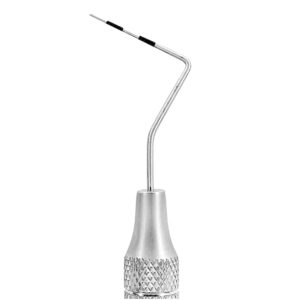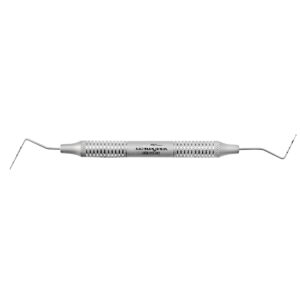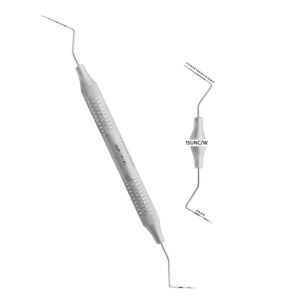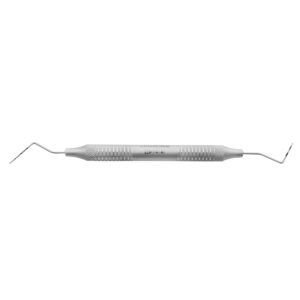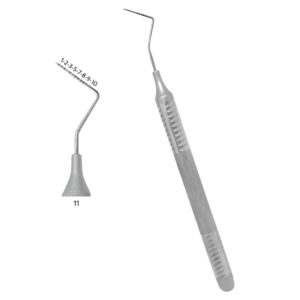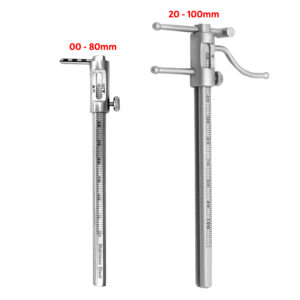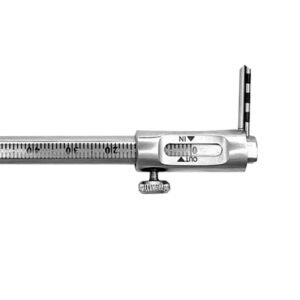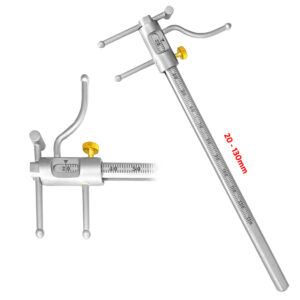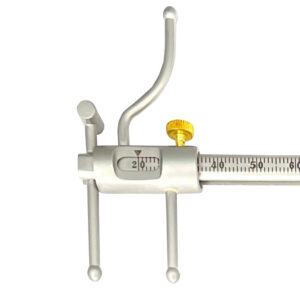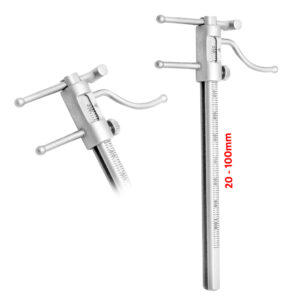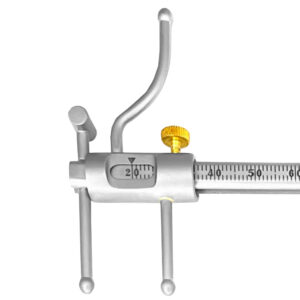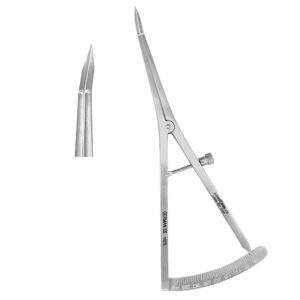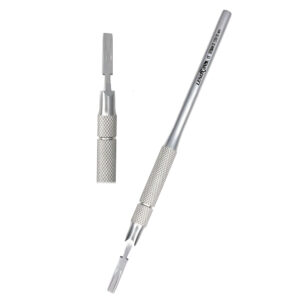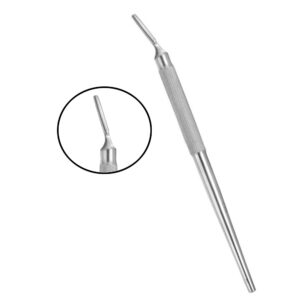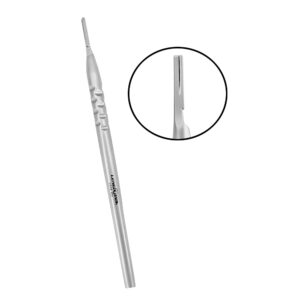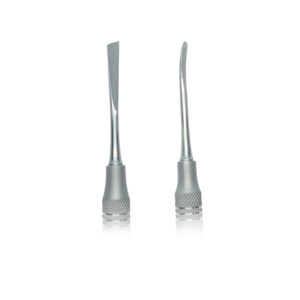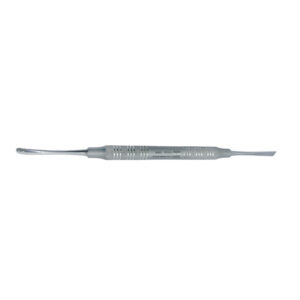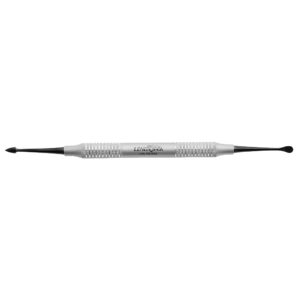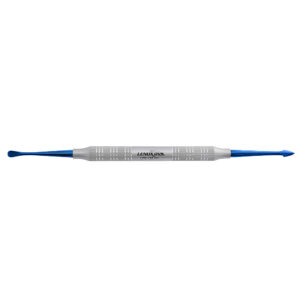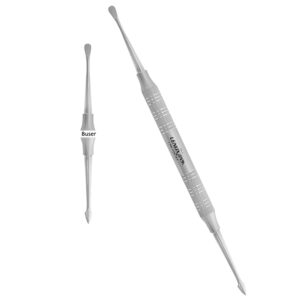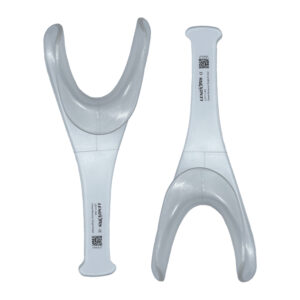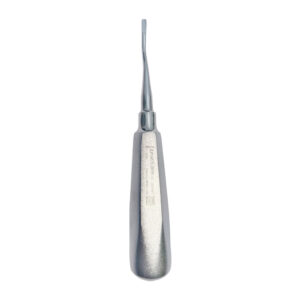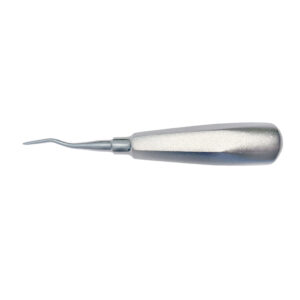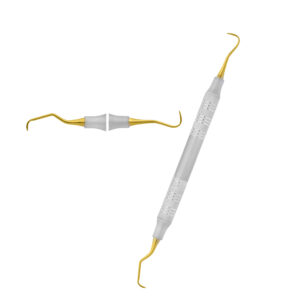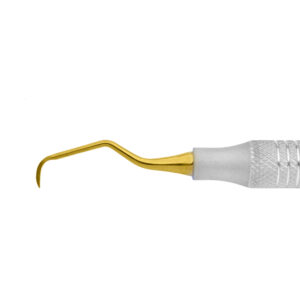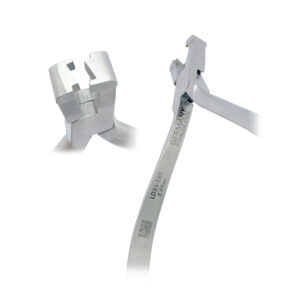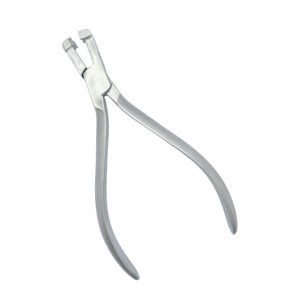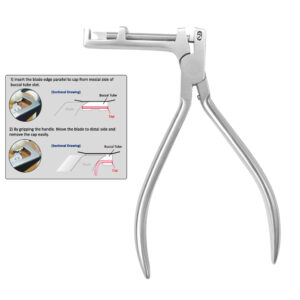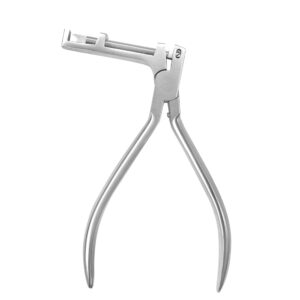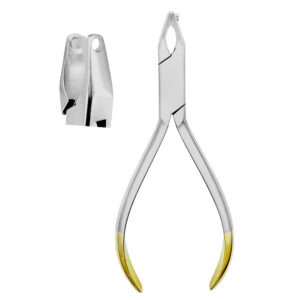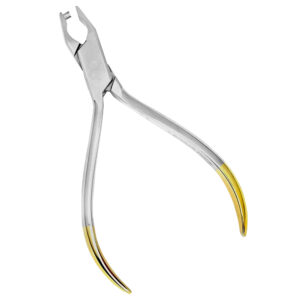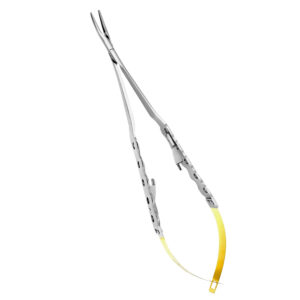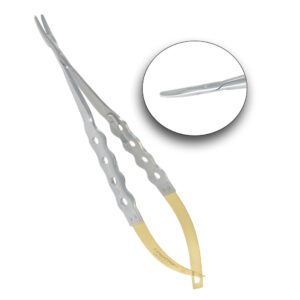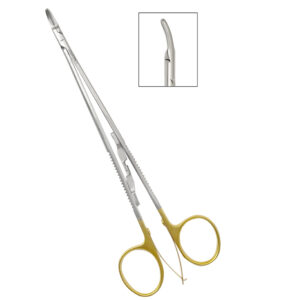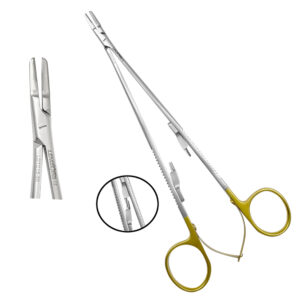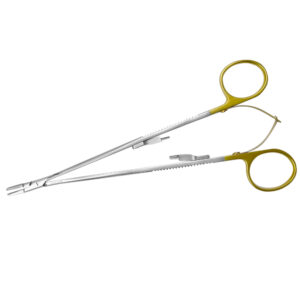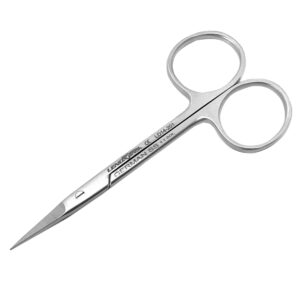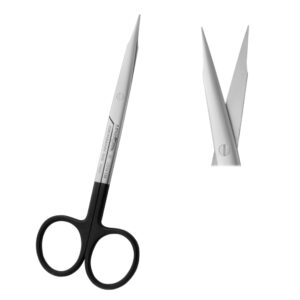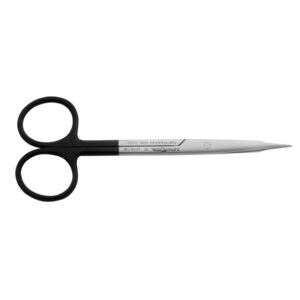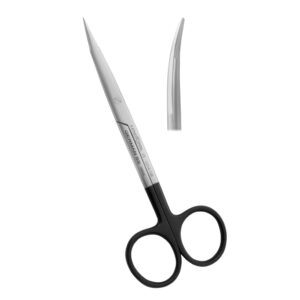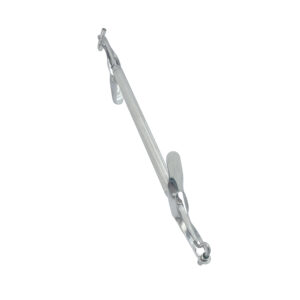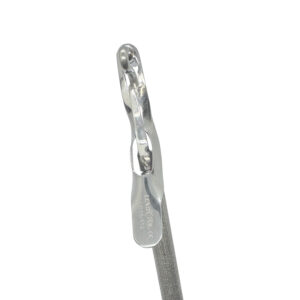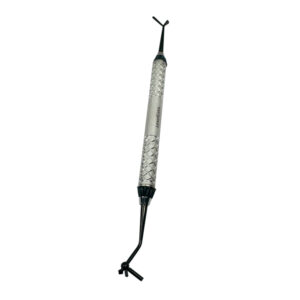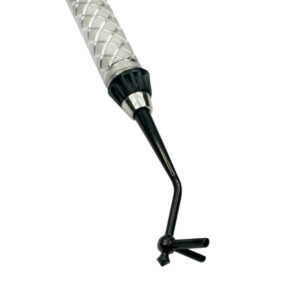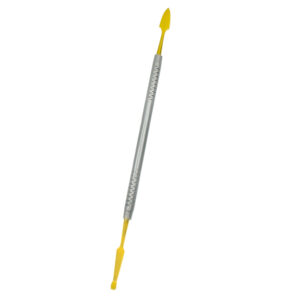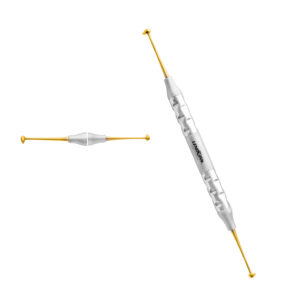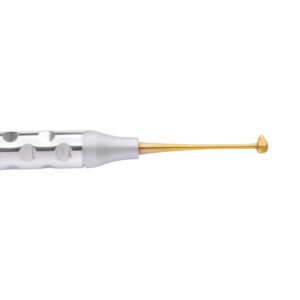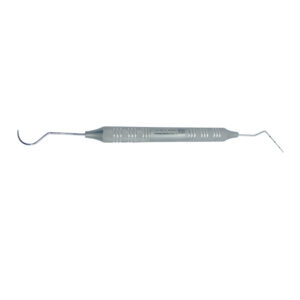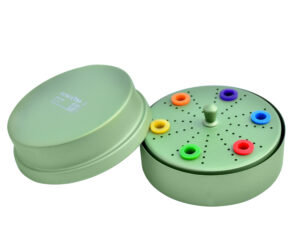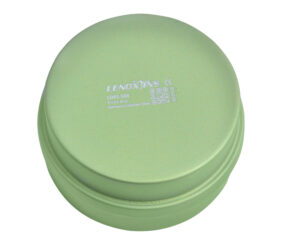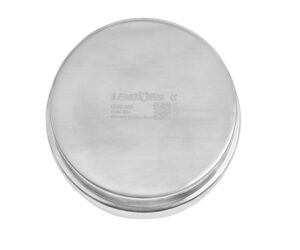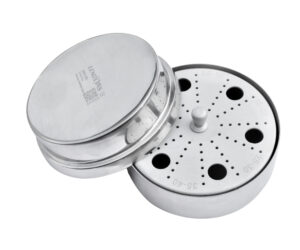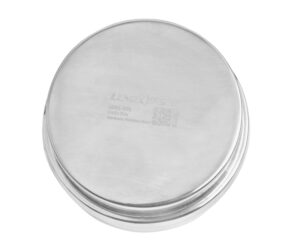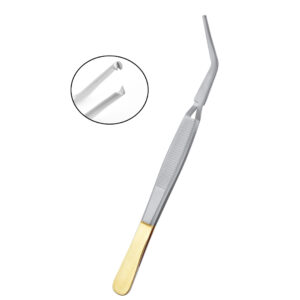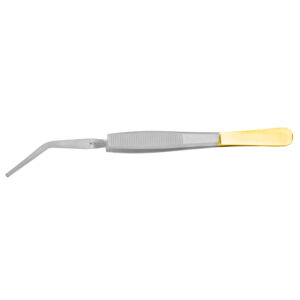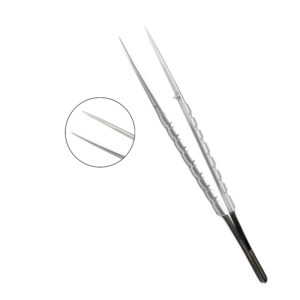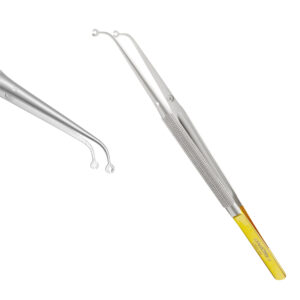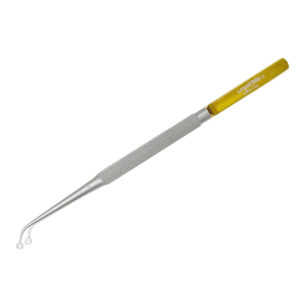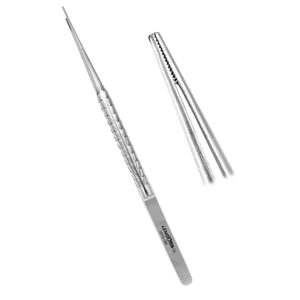Step-by-Step Dental Implant Procedure – Key Tools Reviewed
- Posted April 19, 2025
- by 104
Tools Used at Each Stage of a Dental Implant
A recent survey shows that most dentists face challenges when selecting the right instruments for dental implant procedures. This post reviews the tools used at each stage of a dental implant, offering a clear outline that covers pre-surgical planning, osteotomy preparation, and final restoration. The content addresses common challenges in instrument selection and offers guidance to ensure optimal treatment outcomes.
Key Takeaways
- precision instruments are critical for accurate dental implant procedures
- key tools include diagnostic probes, scalpel handles, and torque wrenches
- proper sterilization and maintenance ensure instrument longevity and reliability
- lenox instruments consistently meets high standards for dental implant care
Introduction
This section offers a succinct overview of the dental implant process, examining each stage’s specialized tool. Precision instruments are crucial for successful osseointegration and optimal performance within the mouth. Lenox Instruments consistently delivers high-quality wrench components that support every phase with accuracy and reliability.
Brief overview of the dental implant process.
The dental implant process begins with careful planning and precise measurements, using tools such as mirror and scissors to assess the condition of the gums and surrounding tissues. The initial stage involves cleaning and preparation, setting the stage for the placement of the screw that will anchor the implant securely.
In subsequent procedures, precision instruments consistently support the treatment plan, ensuring that the implant aligns perfectly with the patient’s mouth structure. Technicians rely on accurate comparisons through mirror examination and the steady use of scissors to remove unwanted tissue while safeguarding optimal healing conditions.
As the implant integrates with the jawbone, the screw serves as a critical fixture, providing the stability necessary for long-term functionality and the ability to withstand regular chewing forces. Lenox Instruments stands at the forefront of creating reliable components that elevate the overall diagnostic and procedural accuracy throughout the implant process.
Importance of precision instruments in each phase
The use of precision instruments is critical in every step of the dental implant process, ensuring that each procedure is carried out with accuracy and reliability. Such tools support effective outcomes by reducing the risk of complications like tooth decay and tooth loss while ensuring that the process is seamless and efficient.
Specialized equipment provides notable benefits that promote efficient dental therapy and detailed diagnostics; for instance, technicians can record patient information reliably using a credit card or email address system for secure transactions and notifications:
- Accurate measurements during initial assessments
- Reliable cleaning and preparation to prevent complications
- Secure documentation of patient treatment plans
By integrating precision instruments, dental professionals enhance the reliability of every treatment component, ensuring that key stages such as implant placement and recovery are supported effectively. Practical applications of these tools foster improved patient care and streamlined procedures, ultimately reducing the risk of complications like tooth loss while supporting comprehensive dental therapy.
Lenox Instruments’ commitment to providing high-quality surgical tools
Lenox Instruments solidifies its reputation by offering surgical tools of unmatched quality for dental implants. The firm guarantees free shipping on orders, and its innovative pliers are designed to support precise adjustments during implant placement, ensuring less inflammation post-surgery. Such commitment underlines their expert approach in catering to advanced dental procedures.
Lenox Instruments applies its extensive expertise to develop tools that meet the rigorous demands of dental implant surgery. The products, including specialized pliers, contribute to simplifying complex procedures and reducing inflammation during healing. This level of precision has become a trusted choice in dental implants, providing a solution that truly benefits practitioners.
With a focus on delivering exceptional performance, Lenox Instruments consistently sets high standards in surgical equipment quality. Their dedication includes offering free shipping, ensuring necessary tools like pliers are readily available to minimize inflammation risks and promote stable outcomes. Dental professionals find value in the reliable and practical approach that also incorporates unique design elements reminiscent of a simple candy-like appeal in usage simplicity.
Stage 1: Pre-Surgical Planning & Assessment
Pre-surgical planning employs diagnostic probes and bone callipers to assess density and structure. Tools ensure the dam of artifacts is controlled, with hemostat and saline utilized for clarity and accuracy. Email integration tips guarantee efficient product usage, linking purpose with reliable outcomes. Practical insights support advanced dental implant procedure assessments.
Tools Used:
The pre-surgical planning phase uses diagnostic probes and bone callipers to evaluate bone density and structure, ensuring lasting results and reducing the risk of injury during early evaluations. This stage allows dental teams to assess the anatomical conditions critical for longevity.
Specialized tools establish a clear treatment roadmap by verifying measurements and ensuring that procedures such as sedation are planned accurately:
- Accurate diagnostic probes for bone density
- Bone callipers for precise measurements
- Forceps for handling small anatomical structures
- Learning center resources for updated practices
In addition, the integration of sedation strategies is monitored through data collected using these tools, which helps minimize discomfort and further prevent any potential injury. Dental practices often consult their learning center materials to apply these methods effectively in ensuring patient comfort and procedure longevity.
Diagnostic probes
Diagnostic probes play a significant role in evaluating bone density and quality during the pre-surgical planning phase, enabling dental teams to gather crucial data from the patient’s medical history. With precise measurements similar to the accuracy found in titanium implants, these probes ensure the surgical approach is both safe and effective.
In the pre-surgical assessment, diagnostic probes work alongside tools like a chisel to outline the anatomical structure and optimize placement strategies for dental implants:
- Assessment of bone density using diagnostic probes
- Verification of patient medical history for tailored treatment plans
- Integration of precise measurement techniques similar to titanium-based practices
- Utilization of newsletter updates for the latest dental procedural insights
Through firsthand expertise and practical application, experts note that diagnostic probes offer clear benefits during pre-surgical planning, contributing to predictable outcomes and improved patient comfort. This detailed data collection enhances the overall dental process and aligns with modern methodologies highlighted in industry newsletters.
High Quality Diagnostic Probes
-
11 Williams / 11.5B Double Ended Probes
Rated 0 out of 5USD14The Lenox Instruments 11 Williams / 11.5B Double Ended Probes are essential tools for precise dental diagnostics. Featuring a hollow handle for enhanced comfort and control, these probes are designed to aid in the thorough examination of dental conditions with exceptional accuracy. -
15UNC / 11.5B Double Ended Probes
Rated 0 out of 5USD14The 15UNC / 11.5B Double Ended Probes with Hollow Handle is a versatile dental instrument designed for precision diagnostics. Featuring the 15UNC and 11.5B tips, this dual-ended probe combines periodontal probing with surface irregularity detection in one lightweight, ergonomic tool. -
15UNC / 11W Double Ended Probes
Rated 0 out of 5USD14The 15UNC / 11Willim Double Ended Probes is a high-precision dental instrument designed to offer dual functionality in one convenient tool. Combining the 15UNC and 11Willim tips, this probe is ideal for both periodontal assessments and detailed surface examination, making it an essential addition to any dental practice. -
11 Williams thin Probe, Single Ended
Rated 0 out of 5USD13The 11 Williams Thin Probe, Single Ended with Hollow Handle is a precision dental instrument designed for accurate periodontal measurements. Its thin, 10 Williams tip provides detailed probing capabilities, making it ideal for assessing pocket depths and periodontal health.
Bone callipers
Bone callipers serve as an integral tool in pre-surgical planning, offering precise measurements that support reliable outcomes in dentistry. Their accurate data collection assists clinicians in determining the ideal implant position and size while complementing advanced techniques such as 3d printing.
These instruments enable dental professionals to assess bone thickness and structure efficiently, ensuring that every procedure aligns with industry requirements and insurance standards alike:
- Accurate measurement of bone dimensions
- Enhanced procedural planning with measurable data
- Compatibility with modern 3d printing techniques
- Streamlined workflows similar to managing a reliable cart of tools
Utilizing bone callipers helps dental teams optimize treatment plans by integrating practical data into surgical decisions, reducing the margin for error and improving patient outcomes in everyday practice. This practical method also supports clear documentation necessary for insurance and treatment records, ensuring an evidence-based approach throughout dentistry.
Purpose
The purpose of pre-surgical planning centers on evaluating bone structure and ensuring optimal health prior to implant placement. In this phase, precise measurements help determine the appropriate shape of the surgical site and confirm that the collagen framework supports the implant’s stability.
This stage allows dental practitioners to gather actionable data that minimizes risks during surgery. Tools such as a curette assist in the cleaning and debridement process, contributing to a controlled environment where the bone and collagen interact efficiently for better patient outcomes.
Establishing a robust treatment plan during the planning phase ensures that every detail, from bone density to tissue health, is thoroughly considered. The integration of a curette in this process helps refine the shape of the treatment area while preserving the natural collagen architecture critical for long-term success.
Product Integration Tip
During pre-surgical planning, integrating products with advanced technology supports a streamlined process. The consistent use of a computer for data analysis, along with tools such as a scraper and glass-based measuring instruments, improves precision when evaluating the jaw structure:
- Utilizing computer software for real-time imaging
- Employing glass calibration tools for accurate measurements
- Incorporating a scraper to clear debris for better analysis
- Assessing the jaw with state-of-the-art technology
Experts emphasize that the combination of reliable diagnostic tools and modern technology leads to informed decision-making and reduced procedural risks. Practical examples in clinical settings show that improved precision is achieved by comparing digital imaging with physical measurements.
Incorporating these products into routine assessments results in faster treatment planning and better patient outcomes. Dental teams report that the use of computer-aided diagnostics and integrative techniques has notably simplified the evaluation process, ensuring a consistent standard of care.
High Quality Diagnostic Calipers
-
VDO Gauge & Implant Gauge Set – Precision Dental Measurement Tool Set
Rated 0 out of 5USD174Discover the VDO Gauge & Implant Gauge Set by Lenox Instruments. A premium dental measurement toolset crafted from stainless steel for precision, durability, and reliability. Shop now! -
VDO Gauge 20-130MM – Precision Dental Measurement Tool
Rated 0 out of 5USD130Discover the VDO Gauge 20-130MM by Lenox Instruments. Premium dental measurement tool designed for precise VDO evaluations. Stainless steel, durable, and ergonomic. Shop now! -
VDO Gauge 20-100MM – Precision Dental Implant Measurement Tool
Rated 0 out of 5USD109Discover the VDO Gauge 20-100MM by Lenox Instruments. A premium stainless steel dental measurement tool for precise VDO assessments. Durable, ergonomic, and reliable. Shop now! -
Castroviejo Measuring Caliper 17cm CVD – Precision Dental Surgical Instrument
Rated 0 out of 5USD43Discover the Castroviejo Measuring Caliper 17cm CVD by Lenox Instruments. High-quality dental surgical instrument for precision measurements during procedures. Premium stainless steel, ergonomic design, and versatile use. Shop now!
Stage 2: Initial Incision and Flap Elevation
This section reviews scalpel handles, blades, and periosteal elevators used as surgical instruments on the maxillary sinus and mandible. It describes their function in cosmetic dentistry, details the purpose of these tools, and mentions a product plug for a reliable syringe system, offering practical insights before covering each tool‘s specific application.
Tools Used
Skilled dental professionals depend on a range of precision instruments during the initial incision and flap elevation stage, where accuracy ensures treatment efficiency and preserves the integrity of the tooth structure. The integration of robust software in procedural planning aids in minimizing disruption to the nerve while guiding every incision. Dental teams in Germany recognize the impact of such technology in refining surgical outcomes.
The deployment of specially designed scalpel handles and blades fosters a systematic approach to flap elevation, ensuring clean cuts and minimal tissue trauma. Reliable instruments in this phase contribute to high efficiency by facilitating swift and precise adjustments, which is essential when avoiding damage near the nerve region. This coordinated technique is further sustained by industry-leading software that supports procedural accuracy.
Surgical instruments for flap elevation have evolved to meet the high demands of contemporary dental implant procedures, particularly in safeguarding critical structures and enhancing efficiency. Practical application of these tools, as observed in treatment centers in Germany, underscores their role in maintaining the integrity of the underlying nerve and tooth. The consistent performance provided by advanced equipment and integrated software solutions offers dental professionals a dependable edge during sensitive surgical steps.
Scalpel handles & blades
Scalpel handles and blades serve an integral role in achieving clear, precise incisions during the initial incision and flap elevation stage, a crucial process in prosthodontics. Dental teams rely on high-grade instruments to ensure minimal tissue disruption while maintaining optimal oral hygiene throughout the procedure.
These instruments are designed to work seamlessly with ultrasonic cleaning systems, which ensure that each scalpel handle and blade remains free from contaminants before and after use. This procedure contributes to a controlled surgical environment and maintains hygiene standards critical in porcelain restorations and implant stability:
- Efficient removal of debris
- Maintenance of sterile conditions
- Support for precise incisions during prosthodontics treatments
Skilled clinicians utilize these tools to perform clean, deliberate cuts that allow the proper elevation of the flap in dental implant procedures. The practical application of such instruments supports greater confidence in post-operative oral hygiene and overall treatment success.
High Quality Scalpel Handles
-
Double Blade Scalpel Handle Straight – Precision Dental Surgical Instrument
Rated 0 out of 5USD36Explore the Double Blade Scalpel Handle Straight by Lenox Instruments, designed for precision and efficiency in periodontal surgeries. Crafted from high-grade stainless steel with an ergonomic straight handle, trusted by professionals globally. -
Round Scalpel Handle Angled Long #7 – Precision Dental Surgical Instrument
Rated 0 out of 5USD22Explore the Round Scalpel Handle Angled Long #7 by Lenox Instruments, designed for precision and efficiency in surgical procedures. Crafted from high-grade stainless steel with an ergonomic angled round handle design, trusted by professionals globally. -
Six Way Adjustable Angled Scalpel Handle – Precision Dental Surgical Instrument
Rated 0 out of 5USD65Explore the Six Way Adjustable Angled Scalpel Handle by Lenox Instruments, designed for precision and flexibility in surgical procedures. Crafted from high-grade stainless steel with six adjustable angles and ergonomic design, trusted by professionals globally. -
Round Scalpel Handle STR Long #7 – Precision Dental Surgical Instrument
Rated 0 out of 5USD22Explore the Round Scalpel Handle STR Long #7 by Lenox Instruments, designed for precision and efficiency in surgical procedures. Crafted from high-grade stainless steel with an ergonomic round handle design, trusted by professionals globally.
Periosteal elevators
Periosteal elevators play a key role in reducing bleeding during the initial incision and flap elevation, benefiting both healing and surgical efficiency. Their precise design allows practitioners to maneuver close to the drill bit area with minimal tissue disruption, which is critical for maintaining postoperative stability for the customer.
These instruments offer reliable performance in separating the soft tissue from the bone, ensuring clear access to the surgical site while preserving the natural tissue architecture. Their optimal use supports timely healing and facilitates subsequent stages such as the fitting of clear aligners when required.
Experienced dental teams rely on periosteal elevators to maintain control over the operative field, which minimizes bleeding and enhances healing outcomes. The tool‘s design enables smooth integration with other instruments like the drill bit, ensuring that every step meets high professional standards that satisfy the customer‘s expectations.
Purpose
The purpose of the initial incision and flap elevation stage is to create a precise pathway for implant placement while preserving surrounding tissues. Expert dental professionals utilize instruments such as a punch to ensure that the incision follows the natural contours with minimal disruption, maintaining refined aesthetics alongside careful exam procedures.
During this stage, a targeted application of lidocaine contributes to effective pain management, providing a comfortable procedure for the customer. The process is designed so that the surgeon can accurately determine the location for the incision, safeguarding sensitive areas such as around the ear while supporting the overall treatment plan.
This phase also focuses on establishing a controlled environment, which is essential for successful healing and integration of the implant. Detailed diagnostic exams and careful management of surgical tools assure that practitioners meet both functional and aesthetic outcomes that enhance patient satisfaction.
Product Plug
Lenox Instruments offers a specialized product plug that integrates seamlessly with precision dental instruments, including a torque mechanism to ensure controlled screw placement during the flap elevation phase. The tool aids in avoiding complications that can arise from improper adjustments, reinforcing its importance in every step of dental implant procedures.
The product plug supports operators by providing a consistent connection for tools such as the needle holder, delivering reliable grip and stability for improved surgical outcomes. Its robust design facilitates the removal of debris and ensures that instruments maintain control, thereby reducing procedure time and promoting smoother operations.
Engineered with high-quality plastic components, the product plug stands as a reliable dental instrument that complements the functionality of scalpel handles and blades during incision stages. Its integration into the surgical setup allows dental professionals to achieve accurate torque management and effective handling, contributing to a predictable and satisfactory outcome.
High Quality Periosteal Elevators
-
Periosteal 24G – Precision Surgical Instrument
Rated 0 out of 5USD36Original price was: USD36.USD25Current price is: USD25.Discover the Periosteal 24G by Lenox Instruments, a professional surgical instrument designed for reflecting and retracting mucoperiosteal tissue during dental procedures. Trusted by professionals in Canada, USA, UK, Australia, and Europe. -
Buser Periosteal Elevators Black Titanium Coated
Rated 0 out of 5USD36The Lenox Instruments Buser Periosteal Elevators with Black Titanium Coated Points are designed for optimal precision in periosteal elevation. Featuring a hollow, ergonomic handle for improved comfort and control, these elevators are essential for advanced periodontal and surgical procedures. -
Buser Periosteal Elevators Blue Titanium Coated – Premium Dental Surgical Instrument
Rated 0 out of 5USD36Discover the Buser Periosteal Elevators Blue Titanium Coated by Lenox Instruments. Designed for precise periosteal elevation with a blue titanium-coated finish, ergonomic hollow handle, and superior durability. Trusted globally by dental professionals. Shop now! -
Buser Periosteal Elevators – Premium Dental Surgical Instrument
Rated 0 out of 5USD36Discover the Buser Periosteal Elevators by Lenox Instruments. Designed for precise periosteal elevation with superior durability, ergonomic hollow handle, and versatile functionality. Trusted globally by dental professionals. Shop now!
Stage 3: Osteotomy Site Preparation
Stage 3 covers essential tools used in osteotomy, including depth markers, surgical drills, and bone expanders. Detailed discussions on stainless steel instruments, precision screwdriver, and versatile tweezers from Ontario support effective pain management and optimal outcomes. Lenox Focus and Pro Tip Box provide practical guidance, ensuring each procedure is executed with expert precision and efficiency.
Tools Used
The osteotomy stage uses a drill designed for precise cutting, ensuring the implant cavity is prepared accurately. The method incorporates periodic assessments with a periodontal probe to verify correct positioning around the root structure, setting the stage for subsequent implant stability. Dental practitioners in the United States report that efficient drill performance is crucial for successful implant integration.
During site preparation, a specialized drill complements traditional tools to create optimal conditions for cement placement and implant success. The use of a periodontal probe confirms that the emerging cavity aligns with the natural root architecture, thereby minimizing risks during the procedure. Experts note that selecting the right drill can significantly improve surgical outcomes in implant procedures.
Advanced techniques during osteotomy involve using a drill alongside other instruments to prepare the site accurately in accordance with stringent protocol standards. This approach, supported by periodic assessments with a periodontal probe, ensures that the root structure is maintained and cement is applied effectively. Dental teams in the United States frequently observe enhanced procedural precision when these tools work in concert during the implant process.
Depth markers
Depth markers offer precise measurement insights during the osteotomy stage, ensuring that the planned implant position aligns reliably with the patient‘s teeth structure.
The markers work in tandem with calipers and other measurement tools to verify that the abutment will fit correctly and support secure implant placement; the process is often supported by simple cotton-based applications to keep the area clear of debris:
- Accurate measurement for alignment under endodontics protocols
- Verification of implant positioning relative to teeth
- Ensuring consistent calibration for abutment integration
These markers are critical in facilitating smooth workflow in surgical environments, with dental professionals utilizing firsthand expertise to address common challenges during osteotomy site preparation.
Surgical drills
Surgical drills are essential in sculpting precise sites during osteotomy, ensuring that the implant cavity is created with minimal disruption to surrounding tissue. Leveraging robust metal construction, these drills contribute to reduced heat buildup and precise cutting performance, a benefit acknowledged by every experienced surgeon.
Compact in design yet efficient in function, modern surgical drills offer reliable performance that enables dental professionals to maintain consistent measurement accuracy throughout implant procedures. Their precision complements the use of other instruments such as the scalpel and laser systems, providing a comprehensive approach to tissue management and implant alignment.
Innovative surgical drills deliver actionable benefits by improving effectiveness in hard tissue adjustments while preserving soft tissue integrity. Dental teams report that the integration of these drills into their workflow significantly enhances treatment outcomes, offering surgeons an optimal combination of power and accuracy in every procedure.
Bone expanders
Bone expanders are critical tools in osteotomy site preparation, offering clinicians a method to widen bone structure safely while reducing the risk of complications during dental implant surgery. Their design ensures precise adjustments, which supports a secure fit for the crown and improves overall implant stability.
Experts note that using bone expanders can help minimize pain during the procedure, making the experience more comfortable for patients. This tool works efficiently to create space for the implant, thereby reinforcing the confidence dental professionals have in achieving a stable foundation for future bridge applications.
By incorporating bone expanders into the surgical process, dental teams gain enhanced control over the implant environment, which contributes to reducing both intraoperative risks and post-operative discomfort. Careful use of this tool supports predictable outcomes and builds trust in the overall treatment plan, ensuring that the implant site is prepared to accommodate the new crown effectively.
Purpose
The purpose of stage 3 in osteotomy site preparation is to ensure that each surgical element aligns accurately with the final implant outcome, incorporating frequent feedback from specialists to improve the evaluation process. The integration of tools and techniques allows a precise graft placement that supports the overall surgery success.
This phase is critical for addressing any concerns during the evaluation, as experts monitor progress with tools that provide real-time feedback on bone density and structure. The use of sodium chloride solution during the procedure aids in maintaining a clean surgical environment, reducing the risk of complications.
Experts advocate that consistent evaluation throughout the surgery reinforces the foundation for successful implant integration while facilitating accurate graft placement. This approach ensures that each step builds upon the previous one, leading to predictable outcomes and heightened practitioner confidence.
Lenox Focus
Lenox Focus integrates advanced techniques during osteotomy site preparation by incorporating a variety of reliable instruments, including precision tools that enhance the overall performance of the clinic. The system is designed to manage factors such as smoke during drilling and to support accurate measurements of implant diameter, directly addressing common clinical challenges.
Lenox Focus emphasizes the use of a retractor to maintain clear access to the surgical field and a torque wrench to ensure proper screw insertion strength, leading to optimized implant stability:
- Effective retraction for improved visibility
- Smoke management to uphold a clean operating area
- Precise calibration of implant diameter
- Consistent use of a torque wrench for controlled adjustments
Lenox Focus supports dental teams by simplifying complex osteotomy procedures and offering actionable insights that reduce procedural risks in the clinic. The arrangement of instruments, including critical tools like the retractor and torque wrench, promotes better coordination during implant site preparation and simplifies recovery processes.
Pro Tip Box
The Pro Tip Box offers a concise resource that helps a dentist streamline procedures when conducting osteotomy site preparation. It provides clear instructions on managing case policy and highlights best practices when a sinus lift is necessary, ensuring that every clinical decision is supported by reliable laboratory data.
The tip box serves as an essential guide that empowers dental professionals to align treatment protocols with the requirements of dental insurance and clinical standards. It provides practical examples that demonstrate how to mitigate procedural risks while maintaining an efficient laboratory workflow, ensuring that patients receive the highest level of care.
Insights within the Pro Tip Box also emphasize adherence to policy standards and effective communication with the dental insurance team. It guides practitioners through key steps that ensure successful sinus lift outcomes while integrating laboratory findings, allowing for a predictable and effective osteotomy site preparation process.
Quality Dental Surgical Tools
-
Box of 10sets- Single Ended Cheek Retractors Plastic (Set of 2) Reusable
Rated 0 out of 5USD109Original price was: USD109.USD76Current price is: USD76.Discover the Single Ended Cheek Retractors Plastic (Set of 2) by Lenox Instruments, designed for optimal visibility and patient comfort during dental procedures. -
Single Ended Cheek Retractors Plastic (Set of 2) Reusable
Rated 0 out of 5USD14Original price was: USD14.USD10Current price is: USD10.Discover the Single Ended Cheek Retractors Plastic (Set of 2) by Lenox Instruments, designed for optimal visibility and patient comfort during dental procedures. -
Periosteal 24G – Precision Surgical Instrument
Rated 0 out of 5USD36Original price was: USD36.USD25Current price is: USD25.Discover the Periosteal 24G by Lenox Instruments, a professional surgical instrument designed for reflecting and retracting mucoperiosteal tissue during dental procedures. Trusted by professionals in Canada, USA, UK, Australia, and Europe. -
E93 Elevator – Dental Extraction Instrument
Rated 0 out of 5USD36Original price was: USD36.USD25Current price is: USD25.Discover the E93 Elevator by Lenox Instruments, a professional dental instrument designed for effective loosening of teeth during extractions. Trusted by professionals in Canada, USA, UK, Australia, and Europe.
Stage 4: Implant Placement
Stage 4 covers essential tools used in dental implant surgical procedures. Implant drivers and torque wrenches ensure precise placement, while stainless steel instruments support safe grafting and periodontology practices. The purpose is to provide reliable outcomes and safeguard against infection using an antibiotic approach. The product highlight focuses on innovations that enhance operative accuracy and efficiency.
Tools Used
During the implant placement stage, practitioners use specialized implant drivers and torque wrenches to secure the implant accurately, ensuring patient safety is maintained throughout the process. These tools work in conjunction with intraoral scanners to verify implant alignment and preserve soft tissue integrity.
Modern surgical practices integrate advanced instruments to optimize the implant procedure and support immediate recovery measures by applying ice as needed and monitoring medication effects. The tools used include:
- Implant drivers for controlled insertion
- Torque wrenches for precise force application
- Intraoral scanners for real-time imaging
- Adjunct cooling systems such as ice modules
- Medications to manage pain and reduce inflammation
Experienced dental teams rely on these tools to offer refined control during implant placement, addressing concerns related to soft tissue management and ensuring a safe environment for the patient. The integration of such devices reinforces the commitment to patient safety and effective clinical outcomes.
Implant drivers
Implant drivers play a crucial role in the overall workflow during implant placement, ensuring that the implant is secured with precision. These tools facilitate controlled insertion while complementing digital dentistry techniques, leading to consistent outcomes even in challenging clinical cases.
During implant placement, the careful use of implant drivers minimizes tissue trauma by providing steady force and balance. Their efficient design supports procedures that use local anesthetic and gauze to maintain a clean surgical field, reducing the risk of post-operative disease complications.
Experienced dental professionals rely on implant drivers to integrate seamlessly into a well-defined workflow, promoting optimal surgical precision. Their reliability in supporting digital dentistry standards allows for accurate placement and efficient management of intraoperative needs, ultimately addressing common concerns and enhancing patient care.
Torque wrenches
The torque wrench serves as an essential device in implant placement by guaranteeing that the prosthesis is secured with exact force, which is critical when working with tungsten carbide components during dental procedures. Its precise calibration supports clinical outcomes and minimizes the risk of misaligned implant components.
In practical applications, dental professionals integrate the torque wrench with other tools such as irrigation systems to maintain a sterile operative field and to manage the temperature of tungsten carbide drills. This careful coordination helps improve overall implant stability and reduces complications during the procedure.
Clinicians note that using a torque wrench during implant placement provides measurable benefits, similar to how a consistent application of putty ensures secure fittings or how tooth whitening protocols enhance patient satisfaction. This methodical approach contributes to predictable outcomes and boosts practitioners’ confidence in delivering effective prosthesis installations.
Purpose
The purpose of implant placement is to secure the implant precisely while promoting a natural and attractive smile. The process ensures that all components work in harmony, resulting in long-term stability and functionality that addresses common patient concerns. Dental professionals rely on refined techniques to achieve accuracy and foster improved outcomes during this critical phase.
This stage focuses on merging advanced mechanical tools, such as implant drivers and torque wrenches, with proven surgical methods that protect surrounding tissue while reinforcing a patient‘s smile. The clear objective is to minimize the risk of complications and support effective integration, thereby enhancing overall patient satisfaction. Practical solutions in this phase directly contribute to predictable and efficient treatment results.
Ensuring a secure and aesthetic implant fit remains a top priority, ultimately contributing to restoring confidence in one’s smile. Clinicians work with precision instruments to guide the implant into its optimal position, balancing functionality with cosmetic appeal. The outcome supports long-term oral health and meets patient expectations for a reliable and lasting solution.
Product Highlight
Lenox Instruments introduces a product that integrates seamlessly into the implant placement workflow, ensuring accuracy during the final stage of the procedure. Its innovative design optimizes torque application, directly addressing common challenges faced by dental professionals.
The product supports precise implant positioning by working in tandem with advanced surgical tools, providing a consistent performance standard. This targeted solution helps reduce the risk of complications, improving overall patient outcomes in implant therapy.
Lenox Instruments emphasizes ease of use and durability in its offering, making it an ideal choice for practitioners requiring reliable components during implant procedures. The tool‘s efficient performance makes it a valuable addition to any dental clinic‘s armamentarium.
Quality Dental Periodontal Tools
-
H5-L5 Scaler/Curette (H5-Langer 5) – Precision Dual-Purpose Periodontal Instrument
Rated 0 out of 5USD29Discover the H5-L5 Scaler/Curette (H5-Langer 5) by Lenox Instruments, a premium dual-purpose periodontal tool designed for scaling and root planing. Trusted by professionals in Canada, USA, UK, Australia, and Europe. -
Younger-Good Curettes 7/8 – Precision Universal Periodontal Instrument
Rated 0 out of 5USD29Discover the Younger-Good Curettes 7/8 by Lenox Instruments, a premium universal periodontal tool designed for effective scaling and root planing. Trusted by professionals in Canada, USA, UK, Australia, and Europe. -
Hygiene Instruments Kit ECO – Set of 8 – Sustainable Dental Hygiene Solution
Rated 0 out of 5USD109Discover the Hygiene Instruments Kit ECO - Set of 8 by Lenox Instruments, a sustainable collection of dental hygiene tools for scaling, cleaning, and probing. Trusted by professionals in Canada, USA, UK, Australia, and Europe. -
Buser Periosteal Elevators Blue Titanium Coated – Premium Dental Surgical Instrument
Rated 0 out of 5USD36Discover the Buser Periosteal Elevators Blue Titanium Coated by Lenox Instruments. Designed for precise periosteal elevation with a blue titanium-coated finish, ergonomic hollow handle, and superior durability. Trusted globally by dental professionals. Shop now!
Stage 5: Healing Abutment Placement & Suturing
The section presents tools for healing abutment placement and suturing. It highlights healing cap pliers, needle holders, and suture scissors while explaining their purpose and integration idea, offering practical insights for dental implant procedures. This overview connects seamlessly with detailed discussions on precise tool applications in each step.
Tools Used
Dental professionals use healing cap pliers to ensure accurate positioning of the healing abutment, promoting efficient tissue integration during the suturing phase. The tools enable streamlined placement to minimize discomfort and support consistent implant outcomes.
Needle holders and suture scissors are essential for executing clean and precise suturing techniques that secure the healing abutment. Their ergonomic design assists clinicians in managing delicate tissue and maintaining a controlled operative environment.
Experienced practitioners report that the integration of these specialized instruments improves patient recovery and reduces procedure time. Their reliable performance and precision foster confidence throughout the healing phase of dental implant surgery.
Healing cap pliers
Healing cap pliers are vital for accurately positioning the healing abutment during dental implant procedures. Their design enables precise control, allowing dental professionals to secure the healing cap in a manner that supports optimal tissue integration and recovery. The pliers improve efficiency and consistency during the suturing phase.
Experts in dentistry highlight the role of healing cap pliers in reducing operation time by facilitating straightforward adjustments during the implant phase. The tool’s balanced construction and ergonomic features support meticulous handling, ensuring that positioning is reliable even in challenging cases. This precision minimizes the risk of post-operative issues and aids in smoother healing.
In practical scenarios, the consistent use of healing cap pliers has led to improved patient outcomes, with reduced discomfort and better aesthetic results. Dental practitioners appreciate the tool’s integration into a streamlined workflow, which enables them to maintain high standards in abutment placement and overall implant stability. The reliable performance of these pliers is a significant asset for clinics seeking to enhance both clinical precision and patient satisfaction.
Quality Dental Pliers
-
Z Farming Plier – Precision Orthodontic Instrument
Rated 0 out of 5USD51Discover the Z Farming Plier by Lenox Instruments, a professional orthodontic instrument designed for precise bending and forming of archwires. Trusted by professionals in Canada, USA, UK, Australia, and Europe. -
Ceramic Brackets Removing Plier STR – Precision Tool for Orthodontic Applications
Rated 0 out of 5USD58Discover the Ceramic Brackets Removing Plier STR by Lenox Instruments, a premium orthodontic tool designed for precise and efficient ceramic bracket removal. Trusted by professionals in Canada, USA, UK, Australia, and Europe. -
Buccal Tube Convertible Cap Removing Plier – Precision Tool for Orthodontic Applications
Rated 0 out of 5USD87Discover the Buccal Tube Convertible Cap Removing Plier by Lenox Instruments, a premium orthodontic tool designed for precise and efficient cap removal. Trusted by professionals in Canada, USA, UK, Australia, and Europe. -
Hole Punch Cutter 3MM – Orthodontic Retainer Invisible Brace Clear Aligner Pliers – Precision Tool for Aligner Adjustments
Rated 0 out of 5USD87Discover the Hole Punch Cutter 3MM - Orthodontic Retainer Invisible Brace Clear Aligner Pliers by Lenox Instruments, a premium orthodontic tool designed for precise aligner adjustments. Trusted by professionals in Canada, USA, UK, Australia, and Europe.
Needle holders
Needle holders play an essential role during the healing abutment placement and suturing phase of dental implant procedures. Their design allows dental professionals to secure sutures with precision, promoting efficient wound closure and improved healing outcomes.
These instruments provide robust control and ease of handling, which helps minimize tissue trauma during suture manipulation. Clinicians rely on needle holders to maintain steady operations, ensuring that the healing abutment area is stabilized effectively.
In clinical practice, experienced dental teams note that properly maintained needle holders enhance procedural confidence and reduce operation times. Their ergonomic design supports accurate suture placement, which is crucial for patient recovery and overall implant stability.
Quality Dental Needle Holders
-
Castro-Viejo Needle Holder Twist Joint, Curved 18cm TC – Precision Surgical Instrument
Rated 0 out of 5USD137Discover the Castro-Viejo Needle Holder Twist Joint, Curved 18cm TC by Lenox Instruments. Designed for seamless suturing with advanced twist joint mechanism, tungsten carbide inserts, and ergonomic design. Trusted globally by surgical professionals. Shop now! -
Castro-Viejo Needle Holder Twist Joint, Curved 16cm TC – Precision Surgical Instrument
Rated 0 out of 5USD137Discover the Castro-Viejo Needle Holder Twist Joint, Curved 16cm TC by Lenox Instruments. Designed for seamless suturing with advanced twist joint mechanism, tungsten carbide inserts, and ergonomic design. Trusted globally by surgical professionals. Shop now! -
Diethrich Micro Needle Holder 18cm CVD – Precision Surgical Instrument
Rated 0 out of 5USD137Discover the Diethrich Micro Needle Holder 18cm CVD by Lenox Instruments. Designed for precise suturing with curved design, ergonomic handle, and superior durability. Trusted globally by surgical professionals. Shop now! -
Diethrich Micro Needle Holder 18cm STR – Precision Surgical Instrument
Rated 0 out of 5USD137Discover the Diethrich Micro Needle Holder 18cm STR by Lenox Instruments. Designed for precise suturing with straight design, ergonomic handle, and superior durability. Trusted globally by surgical professionals. Shop now!
Suture scissors
Suture scissors are essential instruments during the healing abutment placement and suturing phase, designed to deliver precise and clean cuts in delicate tissue. Dental professionals use these scissors to ensure uniform incisions that support proper wound closure and promote effective healing. The tool’s ergonomic design and sharpness are fundamental for achieving optimal results in dental implant procedures.
The precise performance of suture scissors is integral in reducing surgical time and improving post-operative recovery. By offering accurate cutting, these instruments support the efficient placement of sutures and help minimize tissue irritation. Their reliability is consistently validated in clinical practice, where controlled incisions contribute to predictable patient outcomes.
Suture scissors reinforce the surgical team’s workflow by complementing other precision instruments used in dental implant procedures. Their ease of handling and robust construction cater to the needs of experienced practitioners while addressing common challenges in tissue management. This reliable tool enhances overall procedural efficiency and supports high-quality post-surgical care.
Quality Dental Suture Scissors
-
Castroviejo Scissor, 17cm Straight – Precision Microsurgical Instrument
Rated 0 out of 5USD58Explore the Castroviejo Scissor, 17cm Straight by Lenox Instruments, designed for precision and efficiency in microsurgical procedures. Crafted from high-grade stainless steel with ergonomic straight blades, trusted by professionals globally. -
Iris Scissors Small 9cm Straight – Precision Dental Surgical Instrument
Rated 0 out of 5USD22Explore the Iris Scissors Small 9cm Straight by Lenox Instruments, designed for precision and efficiency in microsurgical procedures. Crafted from high-grade stainless steel with ergonomic straight blades, trusted by professionals globally. -
Steven Scissors 13cm Supercut STR – Precision Dental Surgical Instrument
Rated 0 out of 5USD29Explore the Steven Scissors 13cm Supercut STR by Lenox Instruments, designed for precision and efficiency in soft tissue procedures. Crafted from high-grade stainless steel with Super Cut micro-serrated blades and an ergonomic straight blade, trusted by professionals globally. -
Steven Scissors 13cm Supercut Curved – Precision Dental Surgical Instrument
Rated 0 out of 5USD29Explore the Steven Scissors 13cm Supercut Curved by Lenox Instruments, designed for precision and efficiency in soft tissue procedures. Crafted from high-grade stainless steel with Super Cut micro-serrated blades and an ergonomic curved blade, trusted by professionals globally.
Purpose
The purpose of the healing abutment placement and suturing stage is to secure the foundation for optimal tissue integration, ensuring predictable recovery outcomes. This phase relies on precise instrument use to create a stable environment for healing abutments while minimizing discomfort.
By accurately positioning the healing abutment, clinicians improve soft tissue adaptation before tissue closure. The procedure supports efficient healing through careful management of tissue boundaries and swift suture placement, reducing post-operative complications:
- Improved soft tissue alignment
- Enhanced wound closure integrity
- Minimized risk of infection
Clinicians depend on specialized tools during this stage to maintain a controlled surgical field and optimize overall implant success. These instruments contribute to effective patient recovery while addressing common challenges encountered in dental implant procedures.
Integration Idea
The integration idea in the healing abutment placement and suturing stage focuses on uniting advanced surgical tools with efficient suturing techniques. This approach enables practitioners to maintain a consistent workflow that enhances patient recovery while ensuring robust soft tissue adaptation.
The process emphasizes a streamlined method that combines healing cap pliers, needle holders, and suture scissors to minimize operational time and optimize healing outcomes. By aligning these tools under clear procedural guidelines, dental teams can achieve more reliable results, addressing common challenges in implant procedures.
This coordinated method supports precise control over tissue management during the final stages of dental implant surgery. The integration strategy relies on practical insights from experienced clinicians, guiding fellow professionals to improve patient comfort and procedural efficiency.
Stage 6: Final Restoration
Dental teams rely on abutment holders and adjustment tools during final restoration, refining implant stability and aesthetic outcomes. The tools ensure precise alignment and controlled adjustments, meeting functional requirements while supporting predictable results. Review practical insights and join the movement toward improved dental implant procedures for enhanced patient care.
Tools Used
Final restoration in dental implant procedures utilizes abutment holders and precision adjustment tools to ensure optimal alignment and stability. These instruments facilitate a controlled environment where every component is accurately positioned for lasting outcomes.
The stage employs adjustment tools that provide dental teams with practical control over the implant’s final appearance and performance. Clinical examples demonstrate that when using such tools, practitioners experience streamlined workflows and reduced procedural errors:
- Accurate alignment verification
- Controlled force application during adjustments
- Enhanced patient recovery due to precise fitting
Specialized tools in final restoration support a smooth transition from surgical insertion to complete implant stabilization. Industry reviews note that these instruments significantly contribute to improved implant longevity and patient satisfaction by addressing common challenges in restoration procedures.
Abutment holders
Abutment holders play a critical role in securing implant components during the final restoration stage, ensuring precise alignment and long-lasting stability. Dental professionals rely on these instruments to maintain a reliable connection between the implant and the abutment, which is vital for successful patient outcomes. The use of high-quality abutment holders supports consistent results in restorative procedures.
Dental teams benefit from abutment holders as they allow for accurate adjustments that meet strict clinical standards. These tools facilitate controlled force application when connecting components, which minimizes potential complications. Their reliable performance enhances both surgical efficiency and overall patient satisfaction.
Abutment holders provide a streamlined method for positioning the final prosthetic components, contributing to improved implant longevity. The integration of these precise instruments in restorative workflows offers clear benefits by reducing misalignment risks during post-surgical adjustments. Dental experts note that using dependable abutment holders helps ensure predictable outcomes for patients seeking optimal dental restoration.
Adjustment tools
Adjustment tools play a vital role in ensuring that each dental implant achieves the final restoration with optimal precision. Their design allows dental professionals to make controlled modifications, ensuring a well-aligned and functional prosthetic fit that addresses patient concerns regarding durability and comfort.
Dental teams rely on these tools to fine-tune the implant components during the final stages of restoration, achieving secure connections and consistent results that meet clinical expectations. The incorporation of adjustment tools in every procedure supports predictable outcomes and reinforces the overall stability of the dental implant.
Expert practitioners report that the use of adjustment tools simplifies the process of final restoration by allowing swift and exact corrections without compromising the surrounding tissue integrity. This approach not only improves implant longevity but also reduces the likelihood of complications, ultimately enhancing patient satisfaction and trust in the treatment process.
Purpose
The purpose of final restoration in dental implant procedures is to secure a precise and stable connection between the implant and the prosthetic component. It ensures that all elements align to meet both aesthetic and functional outcomes, enhancing overall patient satisfaction.
This stage focuses on optimizing the integration of abutment holders and adjustment tools to achieve predictable implant stability and longevity. The process addresses key concerns by providing measurable adjustments and accurate alignment of implant components:
- Ensuring proper fit of the prosthetic crown
- Maintaining secure connections between the implant and abutment
- Reducing the risk of misalignment and post-operative complications
The objective in final restoration is to improve the functional performance of the dental implant while delivering a natural appearance. Practical application of precise tools leads to efficient procedural outcomes that alleviate common clinical challenges and support long-term oral health.
Quality Dental Restorative Tools
-
Amalgam Carrier – Precision Dental Instrument
Rated 0 out of 5USD36Discover the Amalgam Carrier by Lenox Instruments, a professional dental instrument designed for efficient handling and placement of amalgam during restorative procedures. Trusted by professionals in Canada, USA, UK, Australia, and Europe. -
Multi-Point Composite Filling Instrument – Precision Dental Tool for Composite Placement
Rated 0 out of 5USD29The Multi-Point Composite Filling Instrument is a specialized dental tool designed to offer precise control for composite placement. Its unique multi-point design ensures even application and contouring, making it ideal for restorative dental procedures. -
Double Ended Spatulas – High-Quality Stainless Steel Dental Spatulas
Rated 0 out of 5USD14Discover the Double Ended Spatulas by Lenox Instruments, a professional dental tool designed for precise mixing, sculpting, and application of dental materials. Trusted by professionals in Canada, USA, UK, Australia, and Europe. -
29 Ball Burnisher Double-Ended German Stainless Steel
Rated 0 out of 5USD22Discover the 29 Ball Burnisher Double-Ended German Stainless Steel by Lenox Instruments, a professional dental tool designed for precise burnishing and contouring of composite and amalgam materials. Trusted by professionals in Canada, USA, UK, Australia, and Europe.
Call to Action
The final restoration stage in dental implant procedures calls dental professionals to verify that every component fits accurately and securely. With the precise use of abutment holders and adjustment tools, the process transforms into a refined procedure that directly meets patient expectations for durability and aesthetics. This stage exemplifies how effective instrument integration leads to predictable and lasting results.
Practitioners are encouraged to review their tool selection during final restoration to ensure that all adjustments maintain a consistent, high standard of implant stability. Using advanced adjustment tools, clinicians can perform meticulous corrections that minimize post-operative issues and enhance the overall treatment outcome. This proactive approach supports improved long-term oral health for patients.
Dental teams are urged to invest in high-quality components and ongoing training on final restoration procedures. The use of reliable tools is vital for achieving efficient and precise adjustments that secure the implant’s success. By addressing common challenges with actionable insights, professionals strengthen their practice and ensure patient satisfaction through every step of the dental implant process.
Instrument Maintenance Tips
Expert dental teams follow best practices for sterilization and care to maintain premium instruments, reducing wear during procedures. This section outlines methods for proper cleaning, routine maintenance, and safe storage, providing practical insights to ensure tools retain optimal performance across dental implant stages.
Best practices for sterilization and care
Dental teams maintain precision instruments by applying standardized sterilization methods that reduce potential contamination and extend tool lifespan. This approach includes using high-temperature autoclave cycles, specialized cleaning agents, and ultrasonic cleaning systems for thorough debris removal. These practices ensure that each dental instrument performs reliably during implant procedures.
Clinics integrate routine maintenance schedules to optimize instrument performance and safeguard patient health. Regular inspections detect signs of wear or damage, prompting immediate action to prevent errors during dental implant surgeries. This proactive strategy supports consistent surgical success and enhances overall clinic efficiency.
Experienced professionals emphasize the importance of proper dry and storage conditions after sterilization. Instruments are carefully organized in controlled environments that prevent recontamination and maintain precision. This systematic approach to care and preservation yields predictable outcomes and safe treatment practices in dentistry.
Importance of using premium instruments to reduce wear
Premium instruments reduce wear by maintaining heightened durability and accuracy, which safeguards the integrity of dental implant procedures. They offer improved longevity compared to standard tools, ultimately reducing the frequency of replacements and lowering long-term costs.
Using high-quality tools allows dental professionals to achieve precise measurements and reliable performance during complex procedures. Their robust construction minimizes metal fatigue and wear, ensuring consistent outcomes even under rigorous use conditions.
Experts note that investment in premium instruments results in fewer errors and smoother workflows during implant restoration stages. The use of superior tools provides practical benefits by limiting instrument degradation, thus supporting a reliable, high-standard surgical environment.
Quality Dental Diagnostics
-
Exprobes 23/15 UNC – Precision Diagnostic Instrument
Rated 0 out of 5USD14Original price was: USD14.USD10Current price is: USD10.Discover the Exprobes 23/15 UNC by Lenox Instruments, a professional dental instrument designed for efficient caries detection and periodontal assessment. Trusted by professionals in Canada, USA, UK, Australia, and Europe. -
Endo Organizer Box – Green – Premium Endodontic Instrument
Rated 0 out of 5USD51Discover the Endo Organizer Box - Green by Lenox Instruments, a premium tool crafted to efficiently store and sterilize endodontic files. Trusted by dental professionals in Canada, USA, UK, Australia, and Europe. -
Endo Organizer Box – Premium Endodontic Instrument
Rated 0 out of 5USD43Discover the Endo Organizer Box by Lenox Instruments, a premium tool crafted to efficiently store and sterilize endodontic files. Trusted by dental professionals in Canada, USA, UK, Australia, and Europe. -
Endo Organizer Box – Premium Endodontic Instrument
Rated 0 out of 5USD43Discover the Endo Organizer Box by Lenox Instruments, a premium dental instrument crafted for precision in organizing and sterilizing endodontic files. Trusted by dental professionals in Canada, USA, UK, Australia, and Europe.
Conclusion
Precision, ergonomics, and reliability form the cornerstone of dental implant tools. This section summarizes key insights on using accurate diagnostic probes, scalpel handles, bone expanders, and final restoration instruments. Lenox Instruments supports dental professionals globally, ensuring that every tool meets essential standards for exceptional implant outcomes.
Emphasize the value of using precise, ergonomic, and reliable tools.
Precision, ergonomic design, and reliable tools are essential in ensuring successful dental implant procedures. Dental professionals value these instruments for their direct impact on procedural accuracy and overall patient outcomes. The use of high-quality equipment simplifies complex surgical steps and minimizes complications during dental implant stages.
Dental teams rely on precision tools to achieve accurate measurements during every phase of the implant process. Ergonomic instruments reduce operator fatigue, allowing practitioners to maintain stable performance throughout lengthy procedures. This reliability supports predictable outcomes and builds trust in both the tools and the treatment plan.
The integration of advanced components, including precise and ergonomic instruments, creates a streamlined workflow in dental implant surgeries. This integration addresses common concerns of practitioners by offering dependable performance and enhanced efficiency. As a result, dental professionals can consistently deliver high-standard care with improved patient satisfaction.
Reinforce how Lenox Instruments supports dental professionals globally.
Lenox Instruments provides reliable support for dental professionals worldwide by offering high-quality tools that streamline the dental implant process. Their commitment to precision and efficiency has improved outcomes in clinics across diverse regions.
Experts in the field report that Lenox Instruments contributes to smoother workflows by supplying innovative components specifically designed for each stage of dental implant procedures:
- Accurate diagnostic probes for initial assessments
- Ergonomically designed scalpel handles and blades
- Precision tools for implant placement and restoration
Lenox Instruments continues to build trust among practitioners by ensuring that every product meets rigorous standards. Their success in global markets inspires confidence in dental teams, reinforcing the comprehensive support they receive throughout every phase of implant therapy.
Quality Dental Tissue Forceps
-
PRF Tissue Forceps – Precision Dental Surgical Instrument
Rated 0 out of 5USD29Explore the PRF Tissue Forceps by Lenox Instruments, crafted with fine toothed tips for precision in handling PRF membranes. Trusted by dental professionals in Canada, USA, UK, Australia, and Europe. -
Micro Tissue Forceps, 17cm – Diamond Dust Coated – Precision Surgical Instrument
Rated 0 out of 5USD65Explore the Micro Tissue Forceps, 17cm - Diamond Dust Coated by Lenox Instruments, crafted with diamond dust-coated tips for precision in micro-surgical procedures. Trusted by surgical professionals in Canada, USA, UK, Australia, and Europe. -
Corn Suture Forceps 17cm Diamond Dust Coated – Precision Surgical Instrument
Rated 0 out of 5USD65Explore the Corn Suture Forceps 17cm Diamond Dust Coated by Lenox Instruments, crafted with diamond dust-coated tips for precision in suture handling. Trusted by surgical professionals in Canada, USA, UK, Australia, and Europe. -
Cooley Tissue Forceps 18cm EGR Handle – Precision Surgical Instrument
Rated 0 out of 5USD58Explore the Cooley Tissue Forceps 18cm EGR Handle by Lenox Instruments, crafted with an ergonomic handle for precision in tissue handling. Trusted by surgical professionals in Canada, USA, UK, Australia, and Europe.
Frequently Asked Questions
What instruments are used during pre-surgical planning?
Pre-surgical planning incorporates advanced imaging devices and diagnostic tools. Techniques include intraoral scanning, radiographic analysis, and three-dimensional imaging, which produce detailed anatomical data. These instruments support precise treatment planning and efficient intervention strategies in dental surgery.
Surgical guides and model fabrication systems play integral roles. Data-driven analysis ensures accuracy during procedure simulation. Careful planning and equipment validation contribute to improved surgical outcomes and increased patient safety in dental practices.
Which tools assist in initial incision and flap elevation?
Scalpel and handle remain fundamental during the early incision phase. Their precision is essential for creating a controlled entry through soft tissues in dental surgical procedures.
Specialized instruments for tissue separation, such as a periosteal elevator, support effective flap elevation. They assist in gently mobilizing tissues to provide clear access to the operative site.
What equipment is essential in osteotomy site preparation?
Essential equipment includes precise drills fitted with specialized cutting tools, surgical guides, and reliable irrigation devices. These tools assist in achieving accurate bone preparation while controlling heat and ensuring a clear operative field during the procedure.
Imaging systems, such as digital radiography and cone-beam computed tomography, provide detailed site visualization. Sterilized handpieces and bone markers further support safe, efficient, and predictable osteotomy site preparation for optimal patient outcomes.
Which devices are utilized for implant placement?
Implant placement incorporates tools including surgical motors, drills, and imaging systems that aid in achieving accuracy during procedures. These instruments support implant dentistry through precise control and calibration.
Dental professionals may employ guided surgery systems and computer-assisted planning devices to further improve placement accuracy. These tools enhance procedural efficiency and clinical outcomes in implant treatments.
What maintenance tips apply to dental implant tools?
Dental implant instruments require careful cleaning, regular inspection, and proper sterilization procedures to maintain functionality and reliability. Inspection for wear and corrosion ensures safe operations during patient procedures and supports high standards in dentistry.
Adherence to manufacturer instructions promotes longevity and performance of dental implant tools. Routine maintenance practices, including debris removal and precision calibration, help preserve tool integrity and ensure consistent results in clinical applications.
Conclusion
Precision tools at every stage of a dental implant process drive superior clinical outcomes. These instruments provide unmatched accuracy during assessments, incisions, osteotomy, implant placement, healing, and restoration stages. They empower dental professionals to execute procedures with minimal disruptions and optimal patient safety. This approach reinforces the value of integrating advanced instrumentation for predictable, efficient, and lasting results in implant therapy.



